

Lernia is a machine learning library for autmomated learning on geo data and time series.
Content:
modules are divided into main blocks:
time series
series_load.py
series_stat.py
series_forecast.py
series_neural.py
algo_holtwinters.py
computing
calc_finiteDiff.py
kernel_list.py
geographical
geo_enrich.py
geo_geohash.py
geo_octree.py
basics
lib_graph.py
proc_lib.py
proc_text.py
learning
train_reshape.py
train_shape.py
train_feature.py
train_interp.py
train_score.py
train_metric.py
train_viz.py
train_modelList.py
train_model.py
train_keras.py
train_deep.py
train_longShort.py
train_convNet.py
train_execute.py
Every single time series is represented as a
redF = t_s.reduceFeature(X)
redF.interpMissing()
redF.fit(how="poly")
redF.smooth(width=3,steps=7)
dayN = redF.replaceOffChi(sact['id_clust'],threshold=0.03,dayL=sact['day'])
dayN[dayN['count']>30].to_csv(baseDir + "raw/tank/poi_anomaly_"+i+".csv",index=False)
XL[i] = redF.getMatrix()We homogenize the data converting the time series into matrices to make sure we have data for each our of the day. We than replace the missing values interpolating:
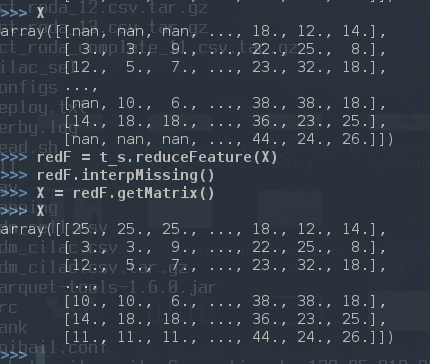 replace missing values via
interpolation
replace missing values via
interpolation
In order to compensate the effects of time shifting (can counts double within two hours?) we apply a interpolation and smoothing on time series:
 to
the raw reference data we apply: 1) polynomial interpolation 2)
smoothing
to
the raw reference data we apply: 1) polynomial interpolation 2)
smoothing
Some locations are particularly volatile and to monitor the fluctuations we calculate the χ2 and control that the p-value is compatible with the complete time series. We substitute the outliers with an average day for that location and we list the problematic locations.
 Distribution of p-value from χ2 for the reference
data
Distribution of p-value from χ2 for the reference
data
We than replace the outliers:
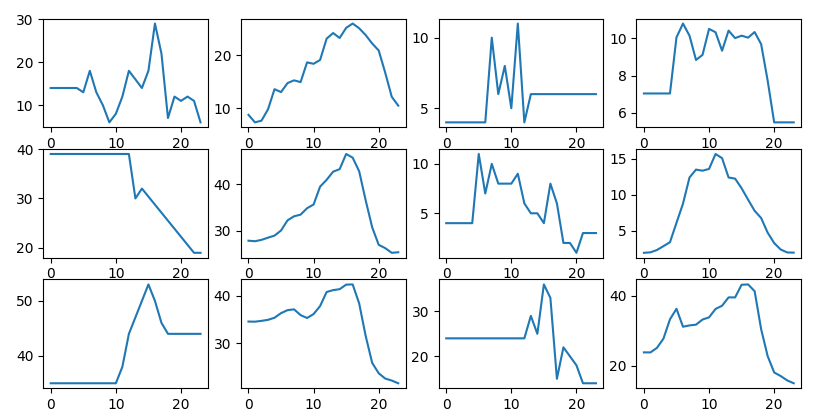 outliers are replaced with the location
mean day, left to right
outliers are replaced with the location
mean day, left to right
We studied the statistical properties of a time series collecting the
most important features to determine data quality.  most important statistical properties of time
series
most important statistical properties of time
series
We calculate the feature importance on model performances based on
statistical properties of time series of reference data. 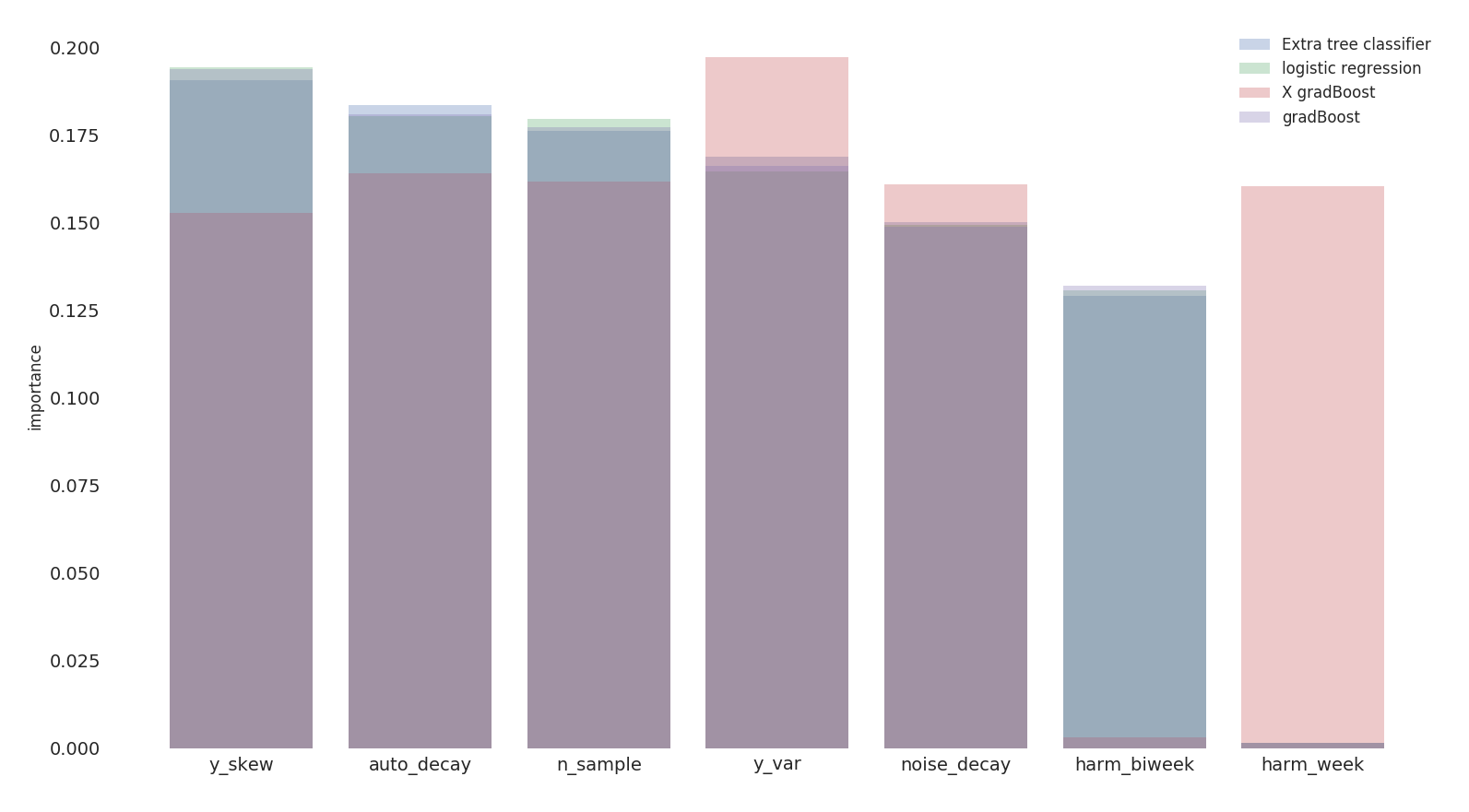 we obtain a feature
importance ranking based on 4 different classification models
we obtain a feature
importance ranking based on 4 different classification models
daily_vis: daily visitorsauto_decay: exponential decay for autocorrelation –>
wie ähnlich sind die Tagennoise_decay: exponential decay for the power spectrum
–> color of the noiseharm_week: harmonic of the week –> weekly
recurrenceharm_biweek: harmonic on 14 days –> biweekly
recurrencey_var: second moment of the distributiony_skew: third moment of the distribution –>
stationary proofchi2: chi squaren_sample: degrees of freedomWe try to predict model performances based on statistical properties
of input data but the accuracy is low which means, as expected, that the
quality of input data is not sufficient to explain the inefficiency in
the prediction. 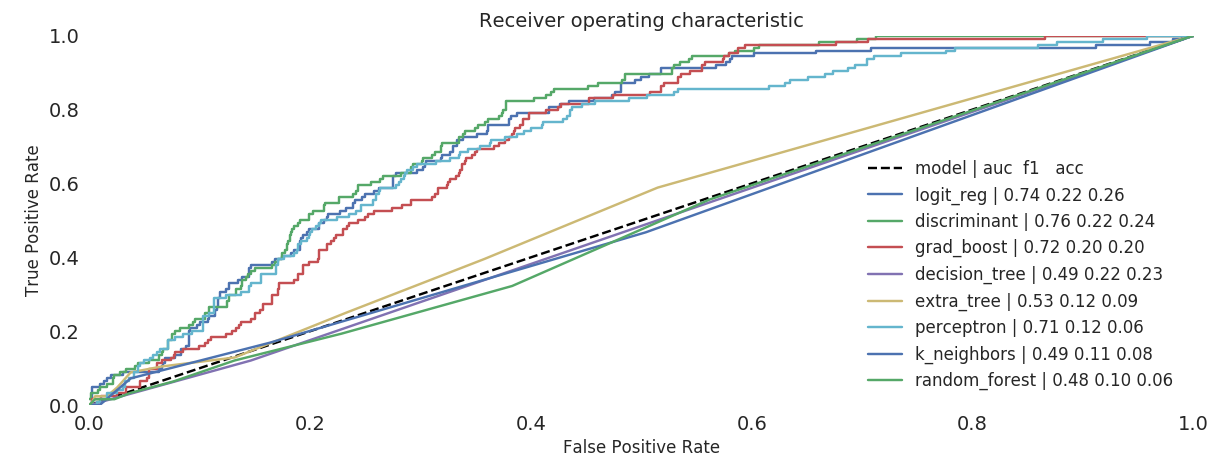 training on statistical properties of input data vs model
performances
training on statistical properties of input data vs model
performances
We now extend our prediction based on pure reference data and
location information 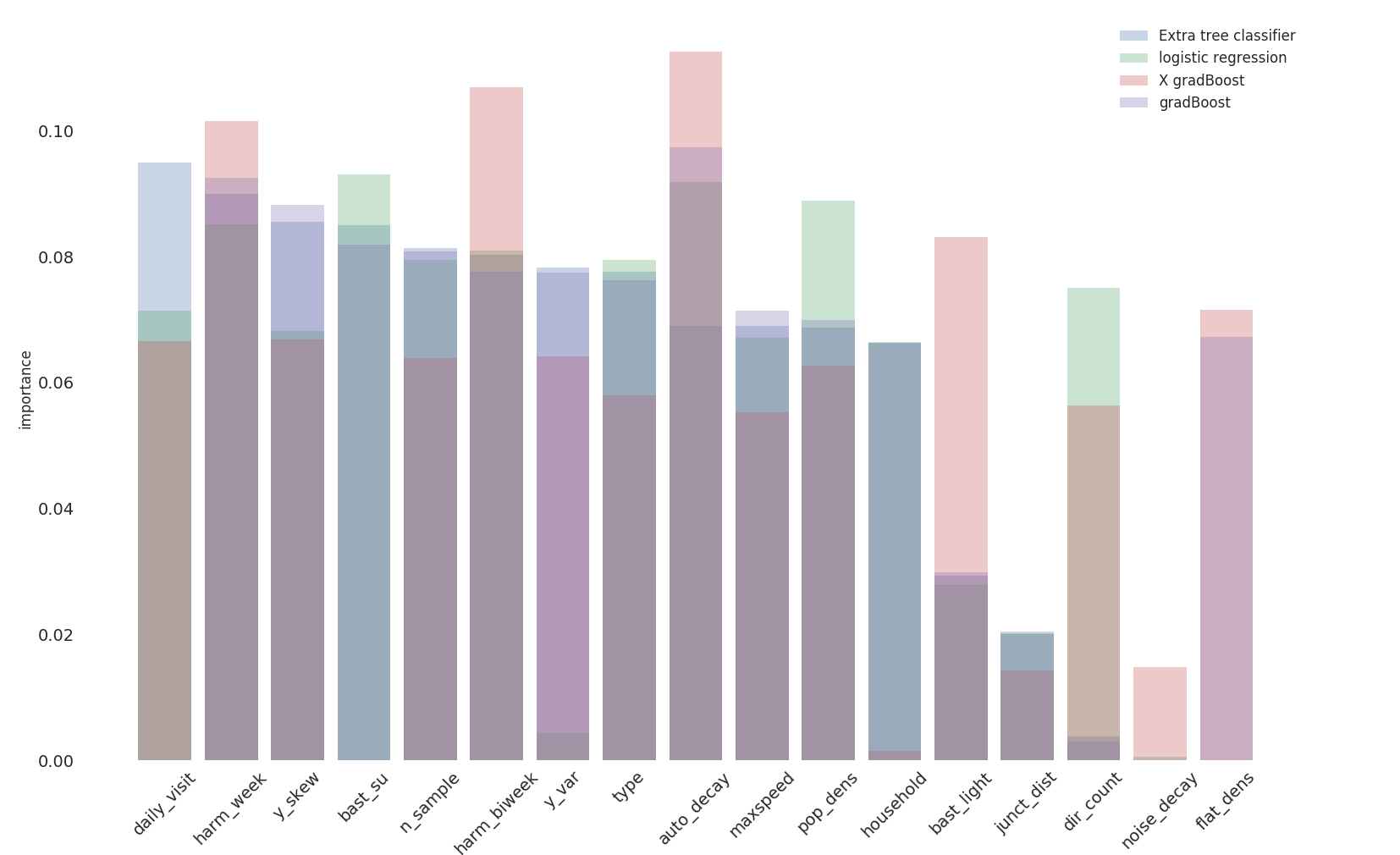 feature
importance based on location information and input data
feature
importance based on location information and input data
Knowing the location information we can predict the performace within
80% of the cases. 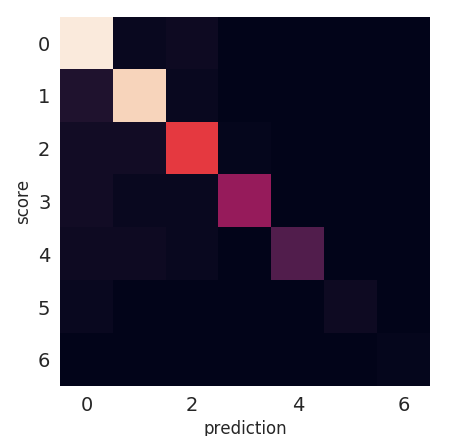 confusion matrix on performance prediction based on location
information
confusion matrix on performance prediction based on location
information
We select the most relevant weather features over a selection of 40.
 correlation between weather
features
correlation between weather
features
Other weather related parameters have an influence on the mismatch.
 weather has an influence on the deviation: di../f/f
weather has an influence on the deviation: di../f/f
We use the enriched data to t
All the skews we have shown are used to train predictors and
regressors to adjust counts: 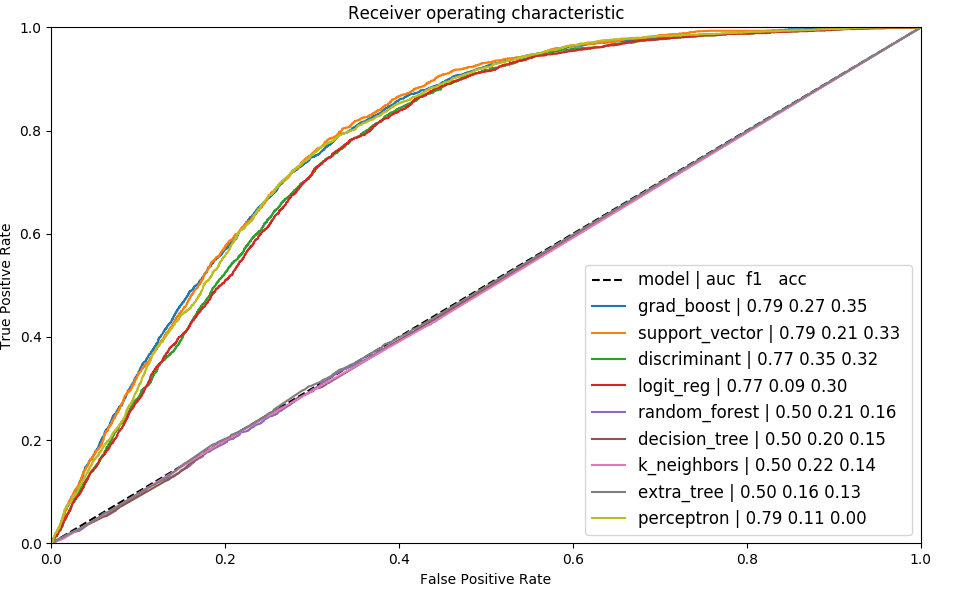 ROC of different
models on training data
ROC of different
models on training data
Thanks to the different corrections we can adjust our counts to get
closer to reference data. 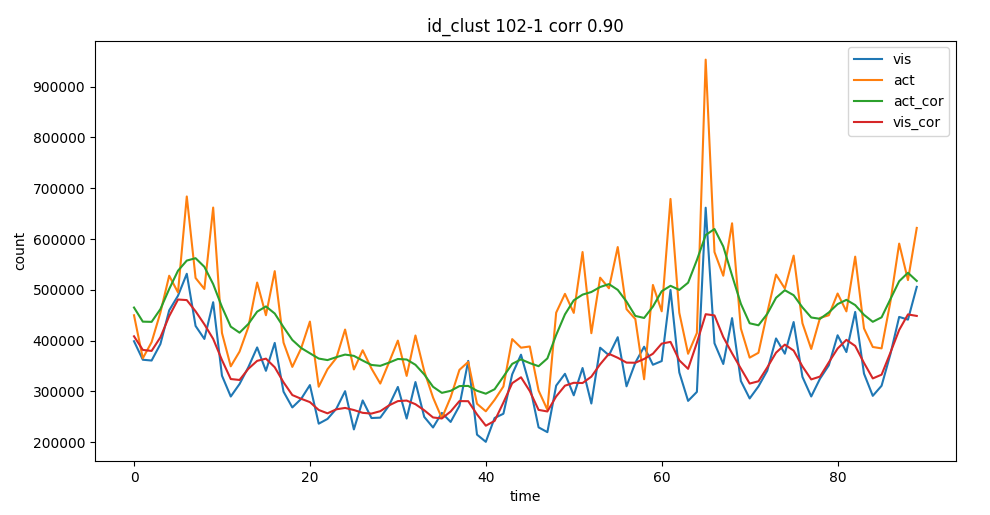 corrected
activities after regressor
corrected
activities after regressor
We have structure the analysis in the following way:  structure of the calculation for the yearly delivery
structure of the calculation for the yearly delivery
We can than adjust most of the counts to meet the project KPIs
 distribution of the KPIs ρ and δ
distribution of the KPIs ρ and δ
We want to recognize the type of user clustering different patterns:
different patterns for kind of user
We calculate characteristic features by interpolating the time series. We distinguish between a continous time series where we can calculate the overall trends via the class train_shapeLib.py
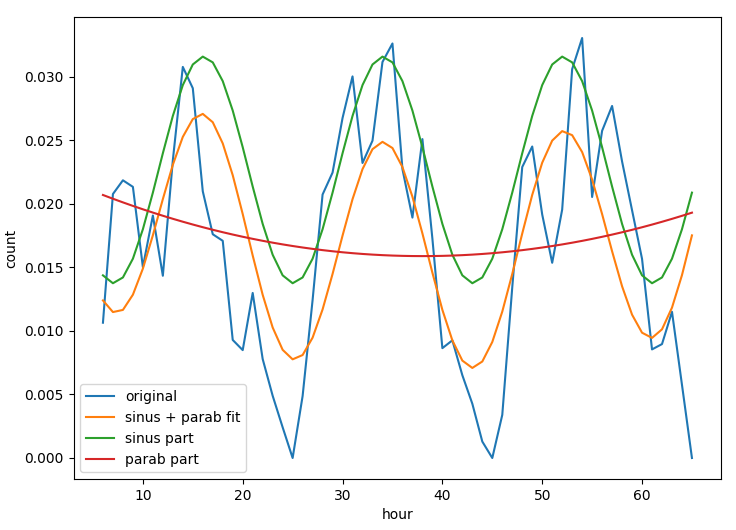 time series of
a location and the daily average where we can understand the
typical daily activity.
time series of
a location and the daily average where we can understand the
typical daily activity.
 daily average of a location Many
different parameters are useful to improve the match between mobile and
customer data, parameters as position of the peak, convexity of the
curve, multiday trends help to understand which cells and filters are
capturing the activity of motorway stoppers.
daily average of a location Many
different parameters are useful to improve the match between mobile and
customer data, parameters as position of the peak, convexity of the
curve, multiday trends help to understand which cells and filters are
capturing the activity of motorway stoppers.
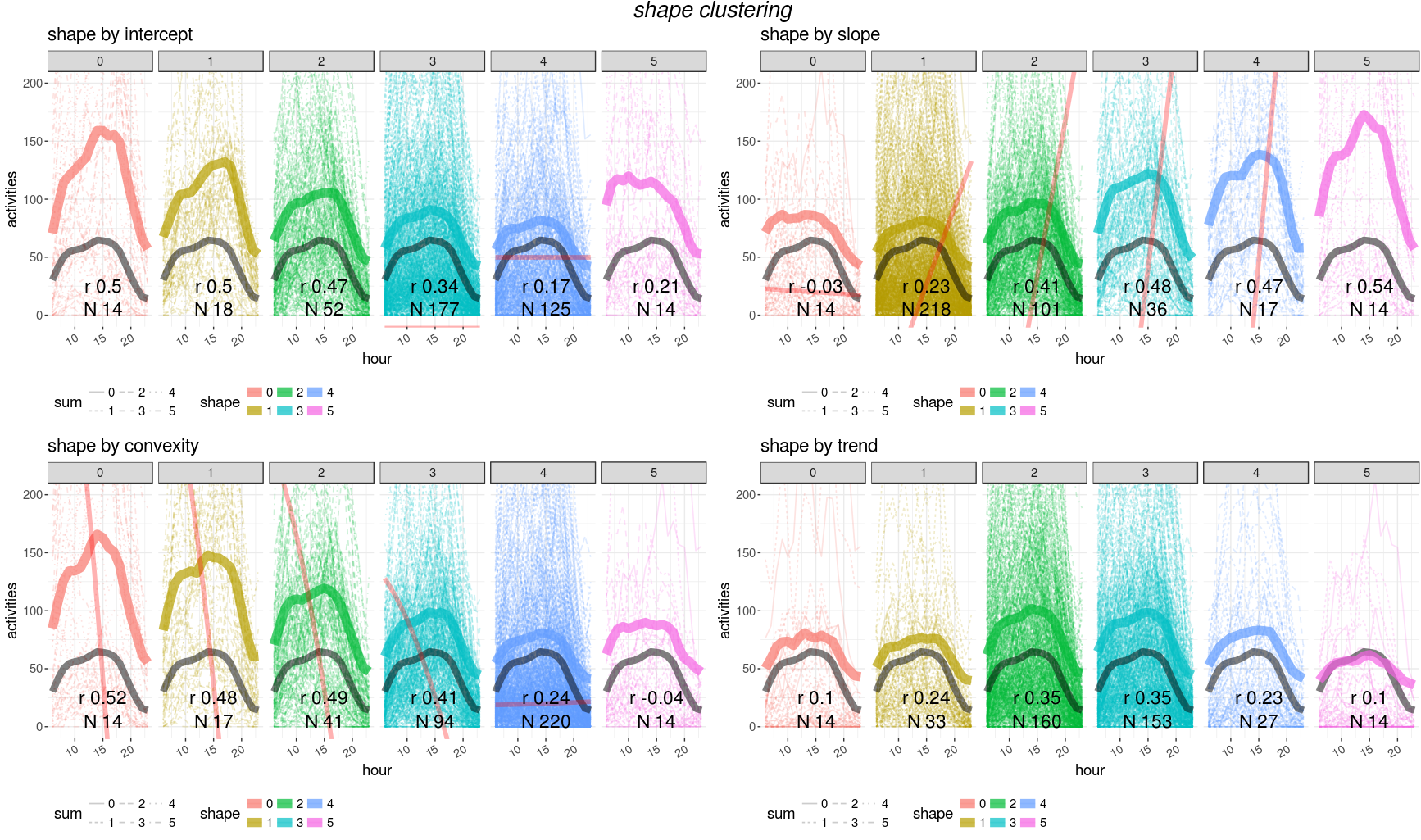 clustering curves (average per cluster is the thicker line)
depending on different values of: intercept, slope, convexity and
trend
clustering curves (average per cluster is the thicker line)
depending on different values of: intercept, slope, convexity and
trend
Unfortunately no trivial combination of parametes can provide a single filter for a good matching with customer data. We need then to train a model to find the best parameter set for cells and filter selection.
We need to find a minimal parameter set for good model performances and spot a subset of features to use for the training. We realize that some features are strongly correlated and we remove highly correlated features
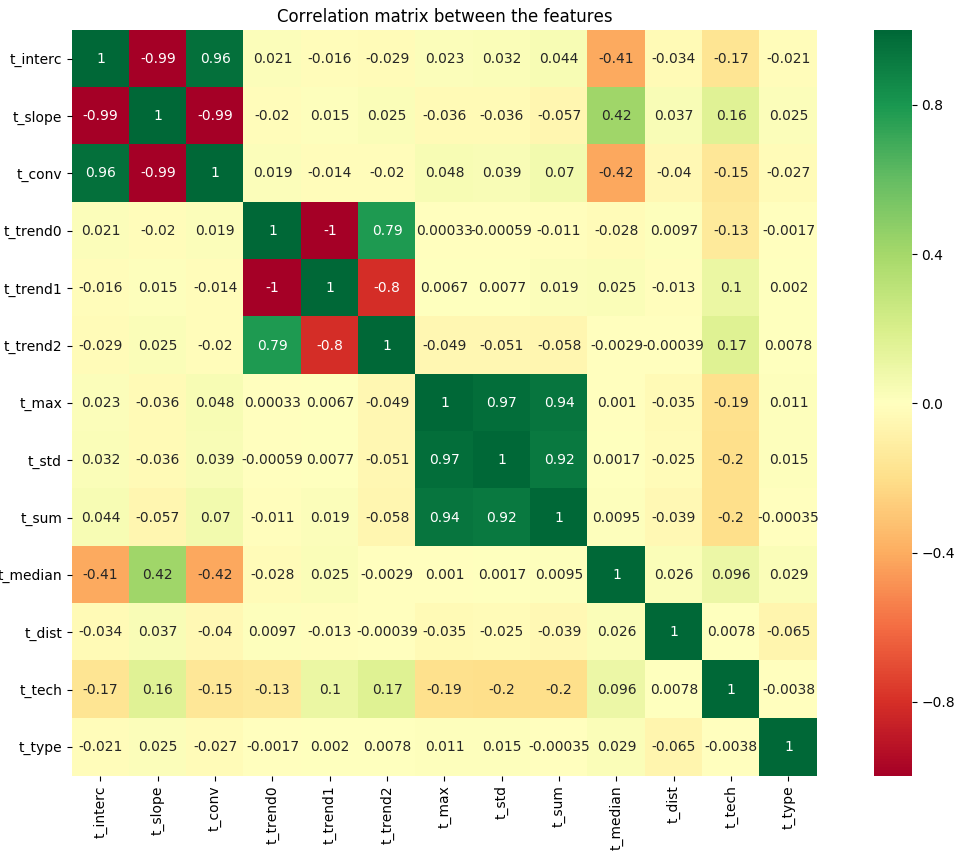 correlation between features
correlation between features
| name | description | variance |
|---|---|---|
| trend1 | linear trend | 5.98 |
| trend2 | quadratic trend | 4.20 |
| sum | overall sum | 1.92 |
| max | maximum value | 1.47 |
| std | standard deviation | 1.32 |
| slope | slope x1 | 1.11 |
| type | location facility | 1.05 |
| conv | convexity x2 | 0.69 |
| tech | technology (2,3,4G) | 0.69 |
| interc | intercept x0 | 0.60 |
| median | daily hour peak | 0.34 |
High variance can signify a good distribution across score or a too volatile variable to learn from.
We select five features which have larger variance to increase training cases.
 final
selection of features
final
selection of features
We use the class train_shapeLib.py to calculate the score between users data and customer data. We calculate the first score, cor, as the Pearson’s r correlation: $$ r = \frac{cov(X,Y)}{\sigma_x \sigma_y} $$ This parameter helps us to select the curves which will sum up closely to the reference curve.
 the superposition of many curves with similar correlation or many
curves with heigh regression weights leads to a good agreeement with the
reference curve The second parameter, the regression
reg, is the weight, w, given by a ridge
regression $$ \underset{w}{min\,} {{|| X
w - y||_2}^2 + \alpha {||w||_2}^2} $$ where α is the complexity parameter.
the superposition of many curves with similar correlation or many
curves with heigh regression weights leads to a good agreeement with the
reference curve The second parameter, the regression
reg, is the weight, w, given by a ridge
regression $$ \underset{w}{min\,} {{|| X
w - y||_2}^2 + \alpha {||w||_2}^2} $$ where α is the complexity parameter.
The third and last score is the absolute difference, abs, between the total sum of cells and reference data: $$ \frac{|\Sigma_c - \Sigma_r|}{\Sigma_r} $$ per location
We build an autoencoder which is a model that learns how to create an encoding from a set of training images. In this way we can calculate the deviation of a single image (hourly values in a week 7x24 pixels) to the prediction of the model.
 sample set of training images, hourly counts per week
sample set of training images, hourly counts per week
In this way we can list the problematic locations and use the same model to morph measured data into reference data.
We train a deep learning model on images with convolution:  sketch of the phases of learning
sketch of the phases of learning
We than test how the images turn into themselves after the prediction of the autoencoder.
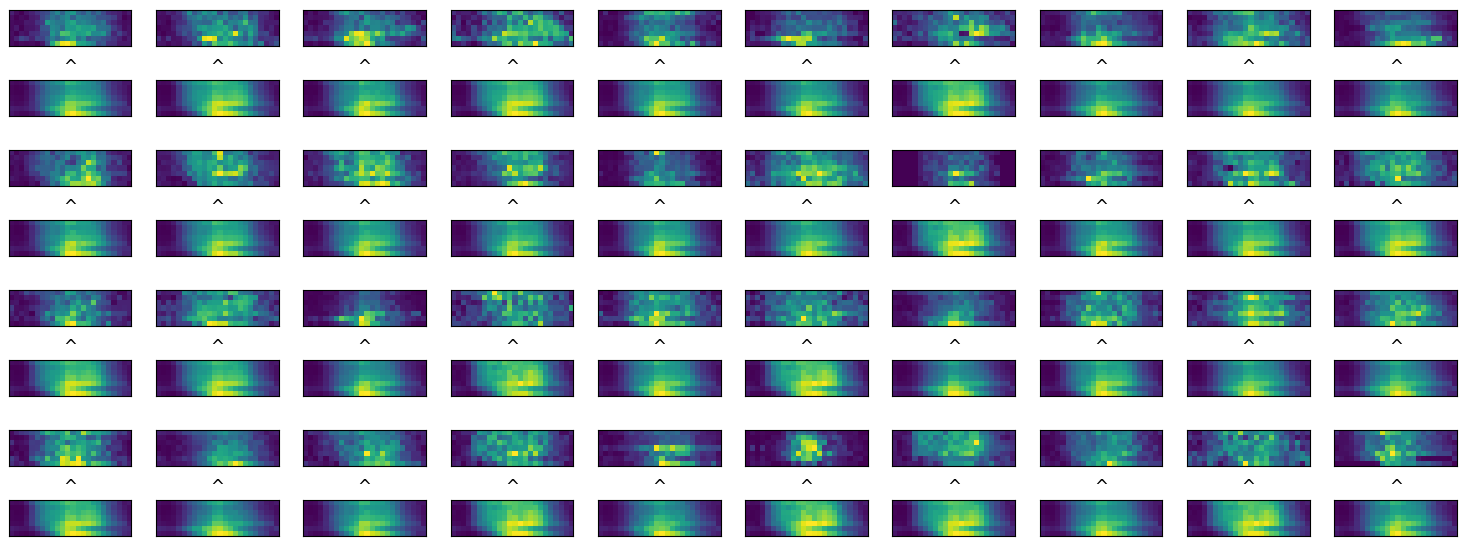 comparison between input and predicted
images
comparison between input and predicted
images
We can than state that 88% of locations are not well
predictable by the model within 0.6 correlation. 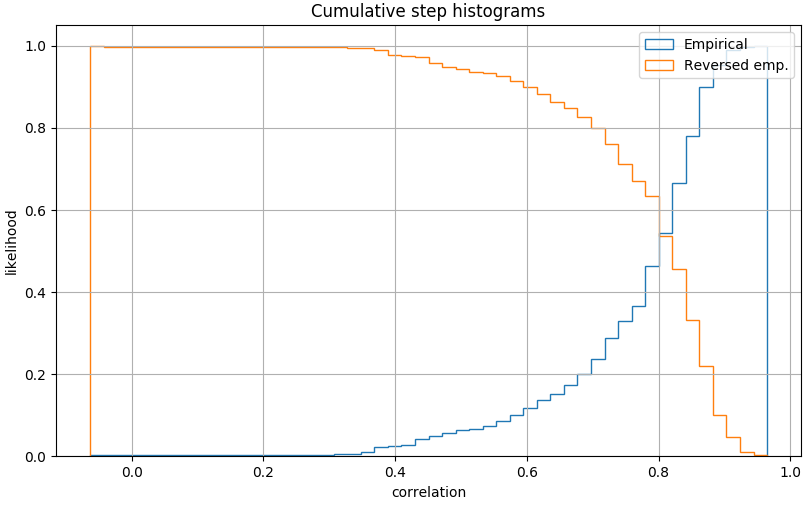 distribution of correlation for autoencoder performances:
correlation on daily values
distribution of correlation for autoencoder performances:
correlation on daily values
Applying both predictor and regressor and we generate:  resulting activities per location
resulting activities per location
We then sort the results depending on a χ2 probability and
discard results with an high p_value 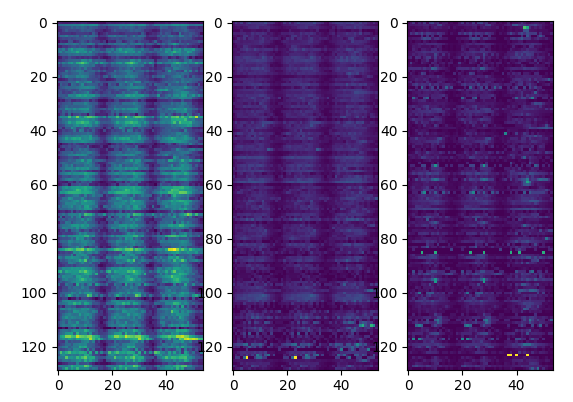 activities sorted by p-value
activities sorted by p-value
To summarize we generate the results applying the following scheme:
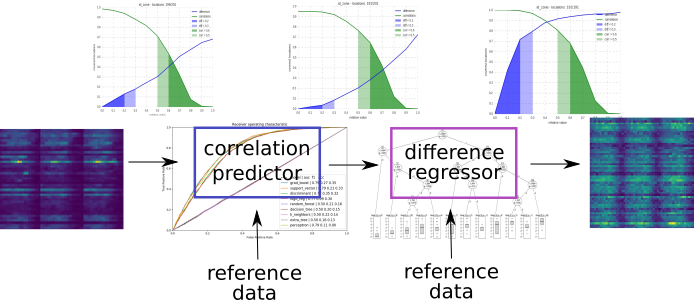 application of the predictor and
regressor
application of the predictor and
regressor
The detailed structure of the files and scripts is summarized in this
node-red flow charts: 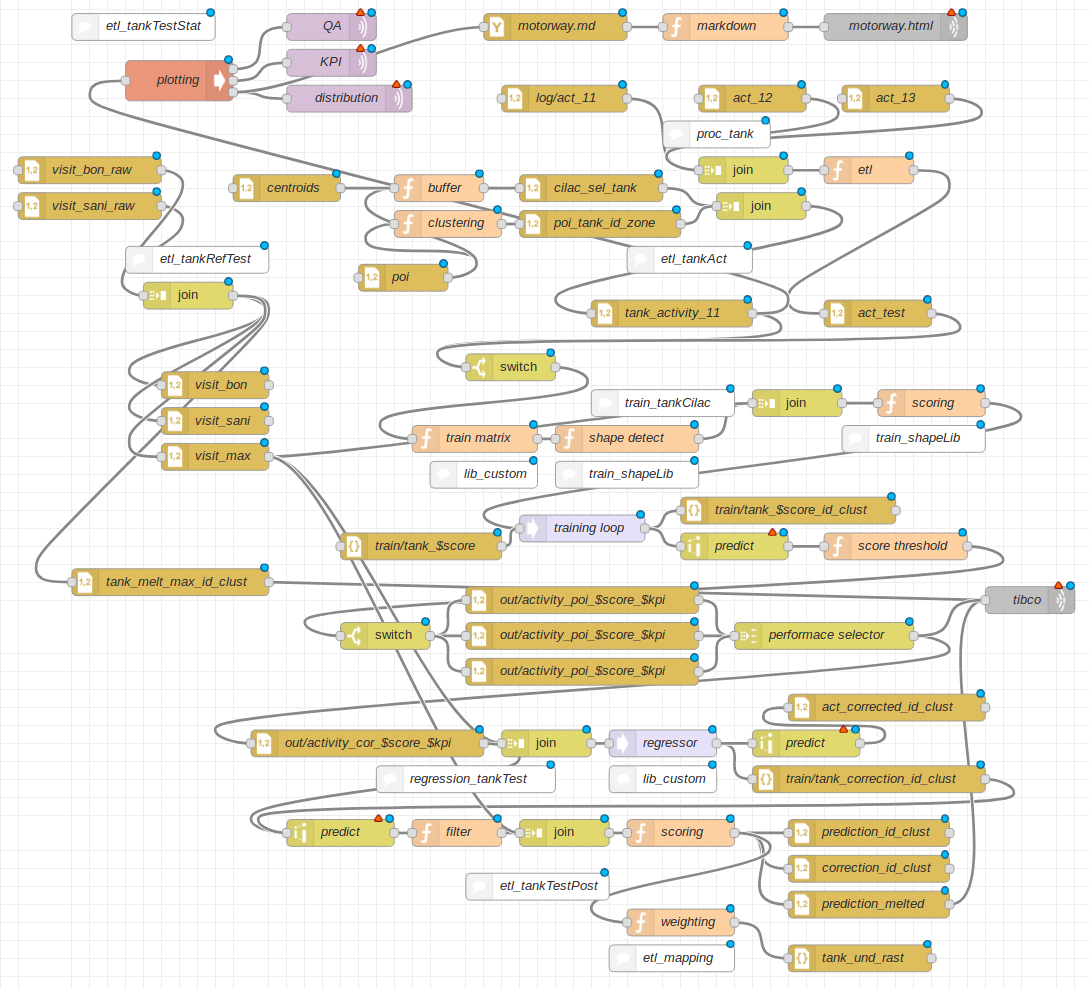 flow chart of the project
flow chart of the project
We have structure the analysis in the following way:  structure of the calculation for the yearly delivery
structure of the calculation for the yearly delivery
